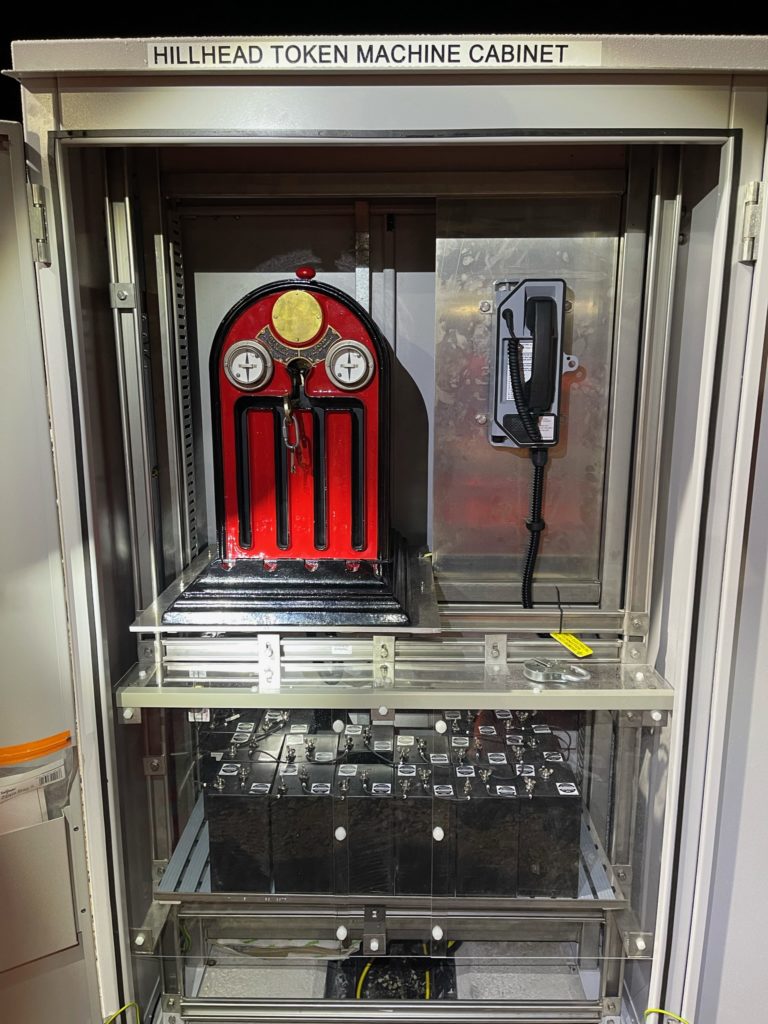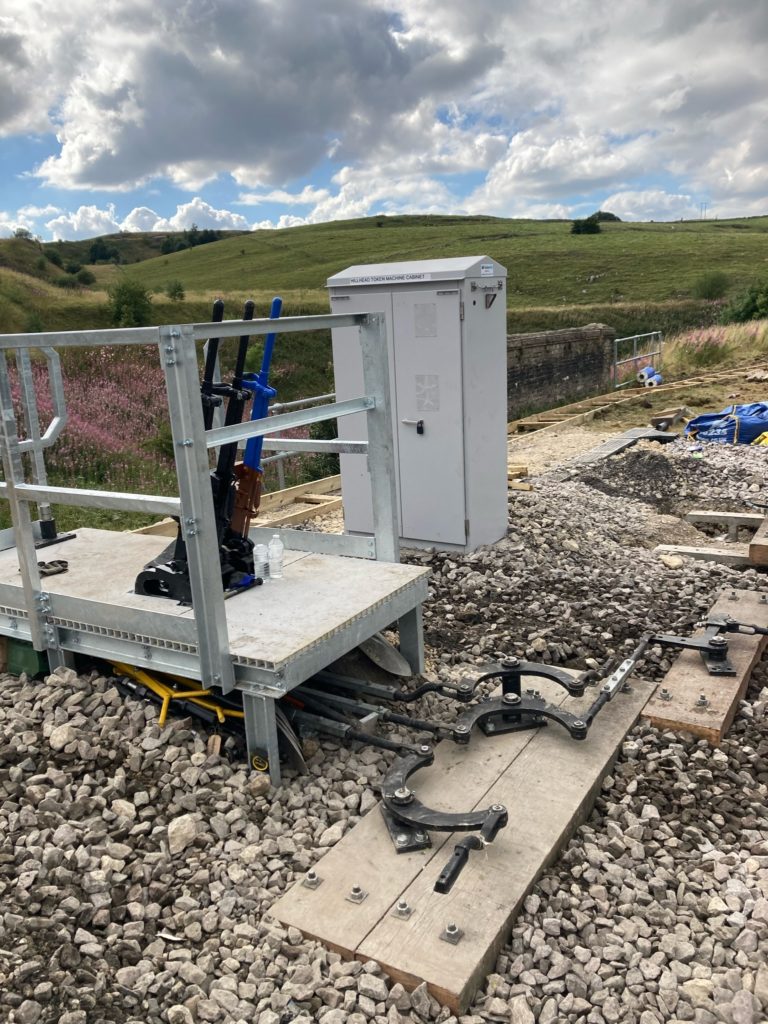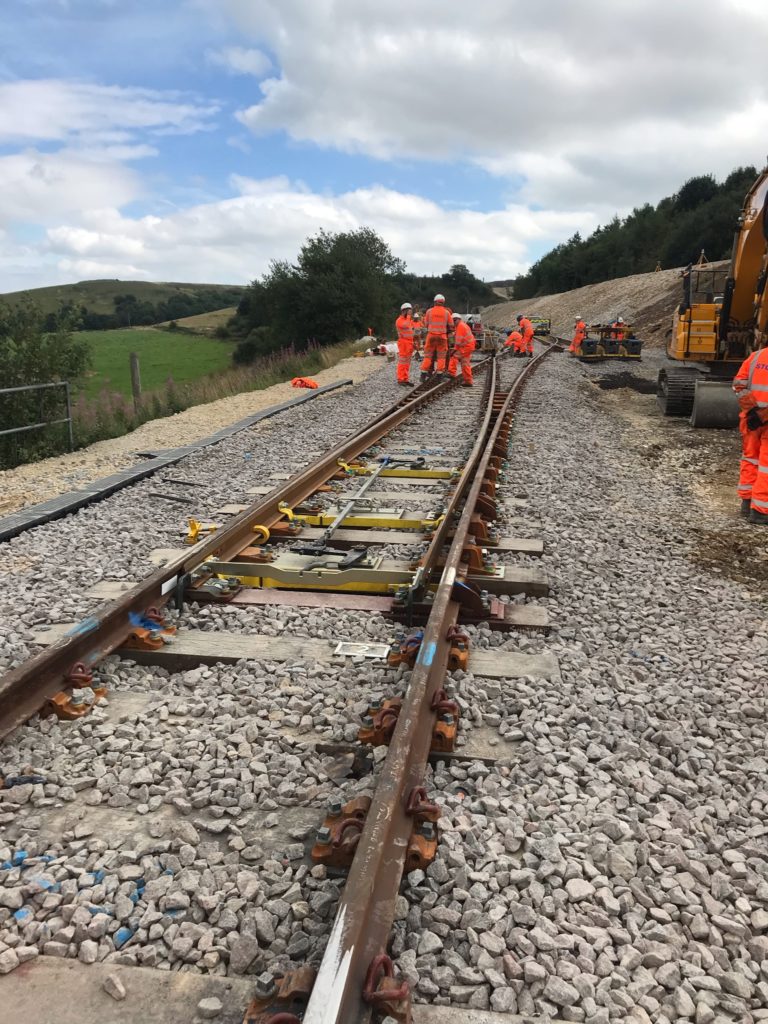Tarmac, the owner of Hillhead Quarry, near Buxton, Derbyshire, is to reopen the Hillhead Quarry, for the production and delivery of aggregates to its customers via rail. As such, a new railhead connection to the Buxton and High Peak Junction line has been opened. Rail freight is now carrying more material than ever before, hauling medium to long distance heavy loads, at speeds of up to 75mph and a train load of freight can replace up to 75 heavy goods road vehicles.
The railhead connection siding at Hillhead has required an interesting signalling solution, from a legacy signalling equipment perspective, with a new mechanical ground frame and token machine, to control train movements along the freight-only single line.

The reopening of the quarry and railhead is part of an upturn in building development, due largely to HS2 and the subsequent increase in demand for aggregate materials. The site was previously connected to the Buxton High Peak Junction line via a ground frame called Hindlow No.1 Ground Frame, but this had been out of use for many years and the track plain lined. There was no rail infrastructure that could be reused.
Extensive civil engineering work was required to provide access for the new siding and the construction of an onsite loading facility. This was contracted by Tarmac to Story Contracting Limited, who also delivered the track for the siding and the crossover connection to the single line.
Network Rail contracted the signalling and telecoms development work to Volker Rail which employed Arup to undertake the detailed design, with installation undertaken by VolkerRail Ltd. HCOMM delivered the telecoms element with a ‘box on post’ telecoms location spliced into the existing copper lineside cable and a direct line telephone to Buxton Signal Box.
No power
The option of clamp lock operated points was considered, but with no power in the area it was decided to install a three-lever mechanical ground frame released by a token machine next to the frame along with the direct line telephone. The ground frame was constructed by Network Rail’s Crewe-based locking fitters and the project team commented that the work delivered by the young enthusiastic fitters was excellent.
The token machine is powered by a battery and located with the token machine in a wide cabinet supplied by Tyrone Fabrication. This mechanical arrangement also avoids the requirement for deadlocking train detection. Access to the new siding at Hillhead Quarry is via a single crossover connection from the Buxton and High Peak Junction line, in the vicinity of the old Hindlow No.1 Ground Frame site. Trains access the sidings via the facing crossover connection from the Buxton direction.
Prior to any move being authorised from the mainline to Hillhead Quarry siding, the shunter checks that the hand points are correctly set after operating the ground frame. The ground frame release is via the possession of a single line token, which is consistent with the existing arrangement at Briggs Ground Frame further along the line. The token machine at Hillhead Quarry also allows a train to be ‘locked’ inside the quarry facility, and a token released by Buxton Signal Box allows the train access back onto the Buxton and High Peak Junction line.

The shunter contacts the Buxton signaller and requests the release of a token. Once a token is obtained it is inserted into the lock of the release lever, and both point levers are operated to move the points reverse to allow the train to join the main line. The shunter ensures that the points on the ground lie in the desired position before authorising any movement. For the crossover to be normalised via the ground frame, drivers are required to ensure that the rear of the train is clear of the points on the main line. This is achieved by radio communications between the shunter and driver. The token is then transferred to the loco for onward movement.
Buxton
The existing Buxton and High Peak Junction line token equipment at Buxton Signal Box has not been changed and the regulation of train movements on the line remains with the Buxton signaller as before, taking into account any additional token release requests from Hillhead as well as Briggs. Because the single line token type is unique to the Buxton and High Peak Junction line, the token can be used for either Hillhead or Briggs ground frames.

A sufficient quantity of tokens is provided to avoid any imbalance of tokens between Buxton, Briggs, and Hillhead, it being assumed that only one train may be locked inside Hillhead Quarry, plus one additional light-engine (for rescue purposes) also locked inside the siding. The use of the existing single line token apparatus to access Hillhead Ground Frame means the same token keys can be used at all ground frames on the route.
The implementation of Hillhead Ground Frame and the trackwork for the crossing has been a great railway collaboration project, and the signalling was signed into use on 4 September, ready for the railhead connection siding to be used towards the end of the year. The simple mechanical ground frame requires no power and the experience gained by the locking fitters and designers will no doubt be used elsewhere on the network.
It is a great example of collaborative working between different sectors of the rail industry to provide a sustainable railway facility to reduce the number of HGVs on the roads and bring down carbon emission.
With many thanks to Richard Wright and Sean Nicholson for their help with this article.


